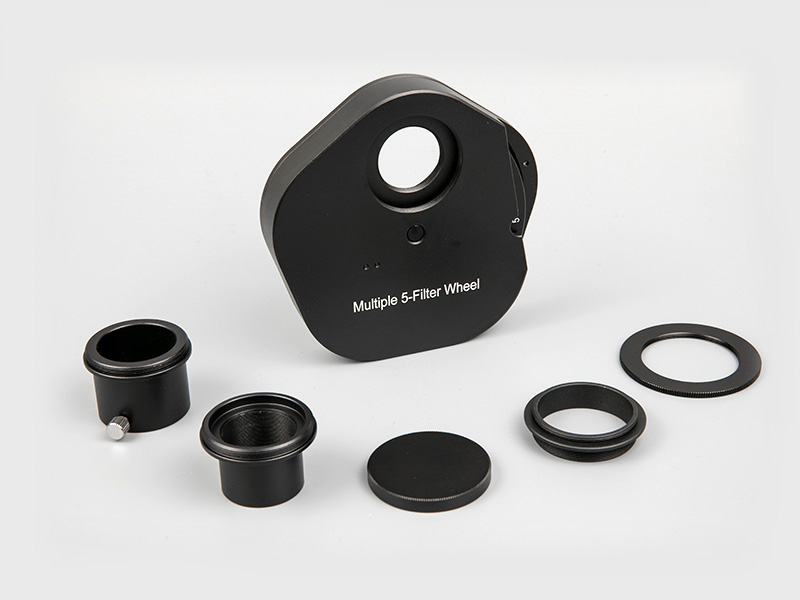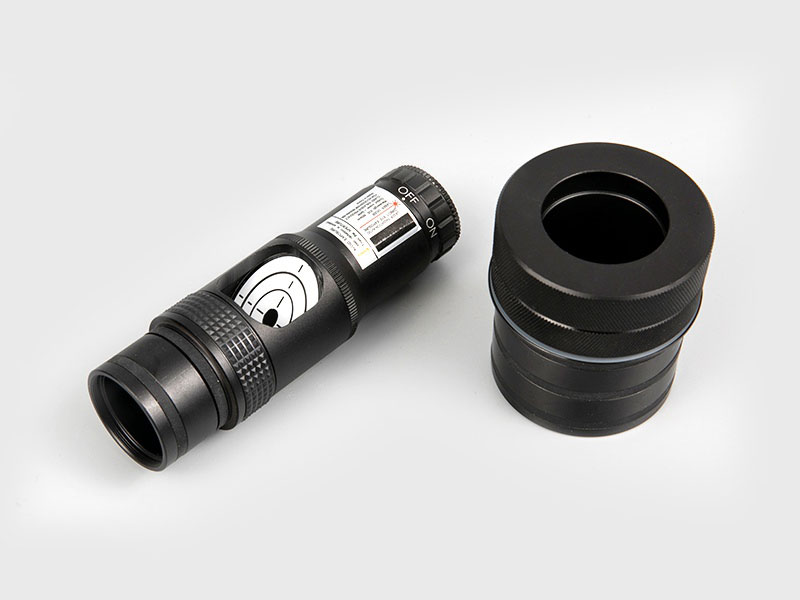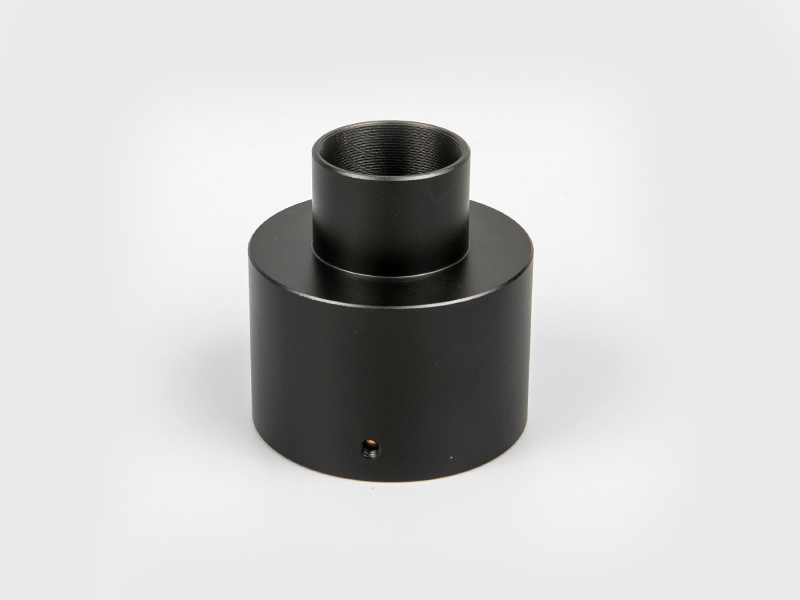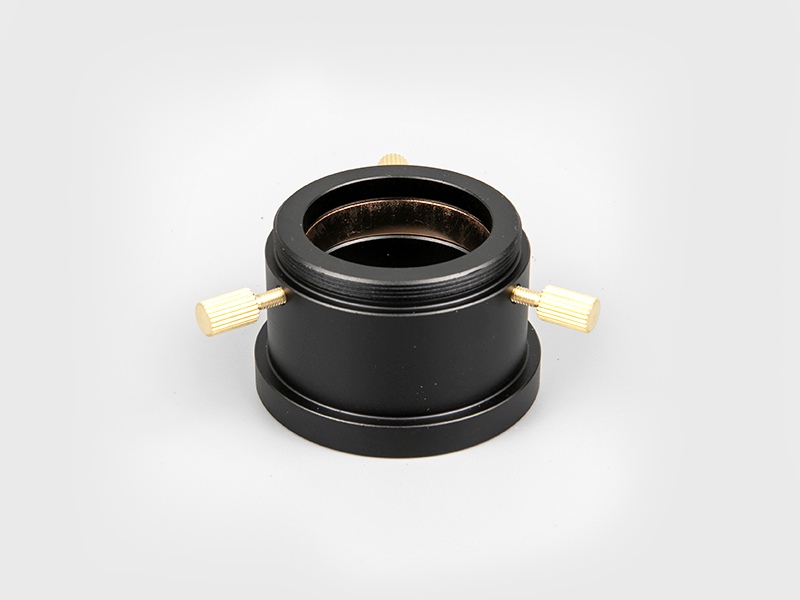There are 6 parameters that indicate the performance of the telescope. They are aperture, magnification, field of view, relative aperture, limit magnitude, and resolution. There are many books and articles that introduce these 6 parameters, so I won’t repeat them in this article. I will only briefly explain the characteristics of binoculars here.
The aperture, magnification and field of view of the binoculars are generally marked on the lens body. The aperture and magnification are represented by two sets of numbers. For example, "10×50" means that the magnification of this binocular is 10 times. The caliber is 50 mm; another example of "7×~15×35" means that the magnification is adjustable from 7 to 15 times, and the caliber is 35 mm. Magnification and aperture are the most important parameters reflecting the performance of binoculars. Pay special attention when purchasing. The binoculars used for astronomical observations should be larger in diameter so that more celestial bodies can be seen. So is the magnification the bigger the better? No. The choice of magnification should be determined according to the needs of observation. When the caliber is the same. With higher magnification, you can see more stars, but for planar objects such as nebulae, it looks brighter at low magnification than at high magnification. And as the magnification increases, the field of view will become smaller. Compared with astronomical telescopes, the advantage of the double mirror is that it has a large field of view and is suitable for observing planar celestial bodies, so the magnification of the binoculars used for astronomical observation should not be too high.
A variable magnification binocular lens is common on the market now. Its magnification can be continuously changed within a certain range, so that it has the function of multiple fixed magnification binoculars in the factory, which is more convenient to use. The shortcomings of the variable magnification double mirror are the small field of view and the complicated structure. The image quality is not as good as the fixed magnification binoculars.
The field of view is another important parameter that reflects the performance of the telescope. Unlike astronomical telescopes, the field of view of binoculars is often not given in units of "degrees", but the maximum width of the scene that can be seen at 1000 meters (yards). For example, "131m/1000m" or "393Ft./1000Yd." means that the maximum width of the scene at 1000 meters (yards) can be seen with this binocular is 131 meters (393 feet). Astronomers are accustomed to using angles to express the size of the field of view, and it is easy to convert between them. For the first expression above, the field of view:
θ=131÷17.5=7°.5
Considering that 1 yard is equal to 3 feet, for the second expression, the field of view:
θ=393÷52.5=7°.5
The field of view of the binocular is determined by the design of the prism and eyepiece. The field of view of binoculars with the same caliber and magnification is often different, and a large field of view can bring a lot of convenience to observation. However, the image quality at the edge of the field of view is often poor and the price is more expensive.
The relative aperture of the binoculars (that is, the ratio of the aperture to the focal length of the objective lens) is larger than that of ordinary astronomical telescopes, and the brightness of the planar celestial body in the telescope is proportional to the square of the relative aperture. Causes of planar objects. The "exit pupil diameter" is often mentioned in the manuals of many binoculars. It is relative to the entrance pupil diameter (that is, the diameter of the telescope), and it is the diameter of the light beam collected by the objective lens when it enters the observer. The value is equal to the ratio of the objective lens diameter to the magnification. For example, the exit pupil diameter of a 10×50 binocular lens is 50mm/10=5mm. The larger the exit pupil diameter. The brighter the image. The pupil diameter of the human eye is the largest when it is completely dark, which is 7 mm, so the exit pupil diameter should not be larger than 7 mm, otherwise part of the light will be lost because it cannot enter the pupil. Generally speaking. The diameter of the exit pupil of the binoculars for astronomical observation is about 7 mm. It is generally considered that the 7×50 binocular lens is most suitable for astronomical observation. Its exit pupil diameter is 7.1 mm, the image is clear and bright, the field of view is larger, generally 6 to 70, and it is light in weight and easy to observe by hand. As the age increases, the maximum diameter of the pupil will gradually become smaller. It is 6 mm when it is around 30 years old, and it is generally only 4.5 to 5 mm when it is over 40 years old. At this time, it is more appropriate to use 10×50 binoculars.
The theoretical values of the limit magnitude m and resolution δ of the telescope are respectively
m=2.1 ten 51gD
δ"=140/D
(Where D is the aperture of the telescope in millimeters, and the unit of δ is arc seconds). However, due to the low magnification of the binoculars, the inaccurate focus adjustment during observation, and atmospheric jitter, the limit magnitude and resolution power cannot reach the theoretical value. The manufacturers of these two parameters of the binoculars generally do not give it, and the user is best to test it by himself, which is very helpful for better use of the double-binoculars. On a clear and moonless night, when the Pleiades star cluster in the sky, the magnitude of the darkest star in Figure 1 that can be seen with binoculars is approximately equal to its limit magnitude. The angular distance between the two sub-stars of a binary star that has just been separated by a binocular lens is its actual resolving power. For double star data, please refer to the relevant star catalog.
The exit pupil distance is the distance between the eye and the last lens of the eyepiece when the entire field of view can be seen clearly. Its size is very important for myopia patients who wear glasses. Although you can still see a clear image after removing the glasses and refocusing, it is very inconvenient when you need to repeatedly observe the starry sky with the naked eye and binoculars. In addition, if a person wearing astigmatism glasses takes off the glasses, no matter how the focus is adjusted, they will not be able to see a clear image.
To see the entire field of view with glasses, the exit pupil distance should be at least 14-15 mm. When the exit pupil distance is less than 8 mm, even people who do not wear glasses will feel inconvenient to use.
Anti-reflection coating
When light enters the glass from the air or enters the air from the glass, approximately 5% is reflected off. The objective lens, prism, and eyepiece of each lens barrel of the binocular lens are added together, and there are generally 10-16 surfaces in contact with air. If these surfaces are not treated in any way, the incident light will lose about 50% due to reflection. In order to reduce this harmful reflection, modern refracting telescopes are coated with single or multilayer antireflection coatings on each optical surface. The material of the multilayer antireflection coating is magnesium fluoride. The single-layer antireflection coating only has the best antireflection effect for a specific wavelength of light, and the antireflection effect for other wavelengths is slightly worse. It can reduce the reflection of each surface light to 1.5%, such as for binoculars The light transmittance of all surfaces can exceed 80%. A good multilayer film has a light reflectivity of only about 0.25% on each surface. If used on all surfaces of a binocular lens, the light transmittance can reach 90-95%.
In general, the single-layer antireflection coating of a visual telescope has the best antireflection effect on 5500 angstroms of yellow and green light, because the human eye is most sensitive to this light. Blue and red light away from this wavelength reflect more, so we see that the single-layer coated lenses are blue-violet or red. Multi-layer coated lenses are light green or dark purple, and a single-layer film that is too thick will also look green. It has been found that some foreign manufacturers use this as a multi-layer film, but it reflects lighter than Real multilayer films are much stronger.
Some people think that even if the coating quality of the large-diameter binoculars is poor, it does not matter. Its caliber can make up for the loss of light. In fact, the reflected light from the inner surfaces of the binoculars will form stray light, which reduces the contrast of the scene and makes the image blurry. This phenomenon is especially obvious when observing objects in shadows under sunlight. Targets that have disappeared in the dazzling brilliance of binoculars with poor coating quality can be easily seen with binoculars with good coating quality.
According to the quality, the AR coating can be divided into the following types, which are generally marked on the obvious position of the lens body.
CoatedOptics (coating): Because there is no official manufacturer that sells binoculars that are completely uncoated, this is actually the lowest level of antireflection coating. It only means that a single layer of antireflection coating is coated on at least one surface, usually the outer surface of the two objective lenses and two eyepieces is coated, while the internal lenses and prisms are not coated.
FullyCoated (full surface coating): All lenses and prism surfaces are coated with a single layer, but if optical plastic lenses are used in the eyepieces, they may not be coated.
Multi-Coated (multi-layer coating): At least one surface is coated with a multilayer film, the other surfaces may be coated with a single layer film, or there may be no coating at all. Usually, only the outer surface of the objective lens and the eyepiece is coated with a multilayer film.
FullyMulti-Coated (multi-layer full surface coating): All surfaces are coated with antireflection coating. Some manufacturers have coated multiple layers on all surfaces, while others only have multiple layers on part of the surface. Other surfaces are still coated. Single-layer film plating.
The quality of the antireflection coating is closely related to the imaging quality of the binoculars. Be careful to identify when purchasing.
The aperture, magnification and field of view of the binoculars are generally marked on the lens body. The aperture and magnification are represented by two sets of numbers. For example, "10×50" means that the magnification of this binocular is 10 times. The caliber is 50 mm; another example of "7×~15×35" means that the magnification is adjustable from 7 to 15 times, and the caliber is 35 mm. Magnification and aperture are the most important parameters reflecting the performance of binoculars. Pay special attention when purchasing. The binoculars used for astronomical observations should be larger in diameter so that more celestial bodies can be seen. So is the magnification the bigger the better? No. The choice of magnification should be determined according to the needs of observation. When the caliber is the same. With higher magnification, you can see more stars, but for planar objects such as nebulae, it looks brighter at low magnification than at high magnification. And as the magnification increases, the field of view will become smaller. Compared with astronomical telescopes, the advantage of the double mirror is that it has a large field of view and is suitable for observing planar celestial bodies, so the magnification of the binoculars used for astronomical observation should not be too high.
A variable magnification binocular lens is common on the market now. Its magnification can be continuously changed within a certain range, so that it has the function of multiple fixed magnification binoculars in the factory, which is more convenient to use. The shortcomings of the variable magnification double mirror are the small field of view and the complicated structure. The image quality is not as good as the fixed magnification binoculars.
The field of view is another important parameter that reflects the performance of the telescope. Unlike astronomical telescopes, the field of view of binoculars is often not given in units of "degrees", but the maximum width of the scene that can be seen at 1000 meters (yards). For example, "131m/1000m" or "393Ft./1000Yd." means that the maximum width of the scene at 1000 meters (yards) can be seen with this binocular is 131 meters (393 feet). Astronomers are accustomed to using angles to express the size of the field of view, and it is easy to convert between them. For the first expression above, the field of view:
θ=131÷17.5=7°.5
Considering that 1 yard is equal to 3 feet, for the second expression, the field of view:
θ=393÷52.5=7°.5
The field of view of the binocular is determined by the design of the prism and eyepiece. The field of view of binoculars with the same caliber and magnification is often different, and a large field of view can bring a lot of convenience to observation. However, the image quality at the edge of the field of view is often poor and the price is more expensive.
The relative aperture of the binoculars (that is, the ratio of the aperture to the focal length of the objective lens) is larger than that of ordinary astronomical telescopes, and the brightness of the planar celestial body in the telescope is proportional to the square of the relative aperture. Causes of planar objects. The "exit pupil diameter" is often mentioned in the manuals of many binoculars. It is relative to the entrance pupil diameter (that is, the diameter of the telescope), and it is the diameter of the light beam collected by the objective lens when it enters the observer. The value is equal to the ratio of the objective lens diameter to the magnification. For example, the exit pupil diameter of a 10×50 binocular lens is 50mm/10=5mm. The larger the exit pupil diameter. The brighter the image. The pupil diameter of the human eye is the largest when it is completely dark, which is 7 mm, so the exit pupil diameter should not be larger than 7 mm, otherwise part of the light will be lost because it cannot enter the pupil. Generally speaking. The diameter of the exit pupil of the binoculars for astronomical observation is about 7 mm. It is generally considered that the 7×50 binocular lens is most suitable for astronomical observation. Its exit pupil diameter is 7.1 mm, the image is clear and bright, the field of view is larger, generally 6 to 70, and it is light in weight and easy to observe by hand. As the age increases, the maximum diameter of the pupil will gradually become smaller. It is 6 mm when it is around 30 years old, and it is generally only 4.5 to 5 mm when it is over 40 years old. At this time, it is more appropriate to use 10×50 binoculars.
The theoretical values of the limit magnitude m and resolution δ of the telescope are respectively
m=2.1 ten 51gD
δ"=140/D
(Where D is the aperture of the telescope in millimeters, and the unit of δ is arc seconds). However, due to the low magnification of the binoculars, the inaccurate focus adjustment during observation, and atmospheric jitter, the limit magnitude and resolution power cannot reach the theoretical value. The manufacturers of these two parameters of the binoculars generally do not give it, and the user is best to test it by himself, which is very helpful for better use of the double-binoculars. On a clear and moonless night, when the Pleiades star cluster in the sky, the magnitude of the darkest star in Figure 1 that can be seen with binoculars is approximately equal to its limit magnitude. The angular distance between the two sub-stars of a binary star that has just been separated by a binocular lens is its actual resolving power. For double star data, please refer to the relevant star catalog.
The exit pupil distance is the distance between the eye and the last lens of the eyepiece when the entire field of view can be seen clearly. Its size is very important for myopia patients who wear glasses. Although you can still see a clear image after removing the glasses and refocusing, it is very inconvenient when you need to repeatedly observe the starry sky with the naked eye and binoculars. In addition, if a person wearing astigmatism glasses takes off the glasses, no matter how the focus is adjusted, they will not be able to see a clear image.
To see the entire field of view with glasses, the exit pupil distance should be at least 14-15 mm. When the exit pupil distance is less than 8 mm, even people who do not wear glasses will feel inconvenient to use.
Anti-reflection coating
When light enters the glass from the air or enters the air from the glass, approximately 5% is reflected off. The objective lens, prism, and eyepiece of each lens barrel of the binocular lens are added together, and there are generally 10-16 surfaces in contact with air. If these surfaces are not treated in any way, the incident light will lose about 50% due to reflection. In order to reduce this harmful reflection, modern refracting telescopes are coated with single or multilayer antireflection coatings on each optical surface. The material of the multilayer antireflection coating is magnesium fluoride. The single-layer antireflection coating only has the best antireflection effect for a specific wavelength of light, and the antireflection effect for other wavelengths is slightly worse. It can reduce the reflection of each surface light to 1.5%, such as for binoculars The light transmittance of all surfaces can exceed 80%. A good multilayer film has a light reflectivity of only about 0.25% on each surface. If used on all surfaces of a binocular lens, the light transmittance can reach 90-95%.
In general, the single-layer antireflection coating of a visual telescope has the best antireflection effect on 5500 angstroms of yellow and green light, because the human eye is most sensitive to this light. Blue and red light away from this wavelength reflect more, so we see that the single-layer coated lenses are blue-violet or red. Multi-layer coated lenses are light green or dark purple, and a single-layer film that is too thick will also look green. It has been found that some foreign manufacturers use this as a multi-layer film, but it reflects lighter than Real multilayer films are much stronger.
Some people think that even if the coating quality of the large-diameter binoculars is poor, it does not matter. Its caliber can make up for the loss of light. In fact, the reflected light from the inner surfaces of the binoculars will form stray light, which reduces the contrast of the scene and makes the image blurry. This phenomenon is especially obvious when observing objects in shadows under sunlight. Targets that have disappeared in the dazzling brilliance of binoculars with poor coating quality can be easily seen with binoculars with good coating quality.
According to the quality, the AR coating can be divided into the following types, which are generally marked on the obvious position of the lens body.
CoatedOptics (coating): Because there is no official manufacturer that sells binoculars that are completely uncoated, this is actually the lowest level of antireflection coating. It only means that a single layer of antireflection coating is coated on at least one surface, usually the outer surface of the two objective lenses and two eyepieces is coated, while the internal lenses and prisms are not coated.
FullyCoated (full surface coating): All lenses and prism surfaces are coated with a single layer, but if optical plastic lenses are used in the eyepieces, they may not be coated.
Multi-Coated (multi-layer coating): At least one surface is coated with a multilayer film, the other surfaces may be coated with a single layer film, or there may be no coating at all. Usually, only the outer surface of the objective lens and the eyepiece is coated with a multilayer film.
FullyMulti-Coated (multi-layer full surface coating): All surfaces are coated with antireflection coating. Some manufacturers have coated multiple layers on all surfaces, while others only have multiple layers on part of the surface. Other surfaces are still coated. Single-layer film plating.
The quality of the antireflection coating is closely related to the imaging quality of the binoculars. Be careful to identify when purchasing.
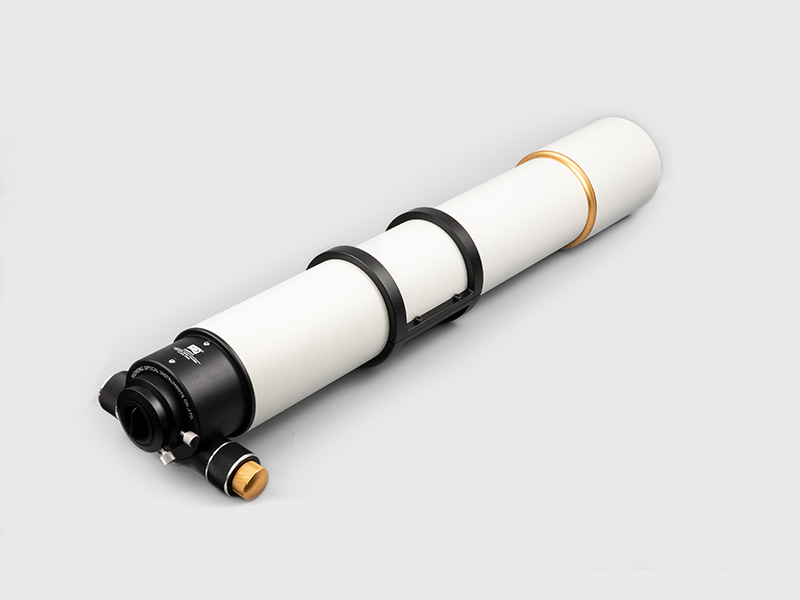

 English
English 日本語
日本語 Deutsche
Deutsche España
España


